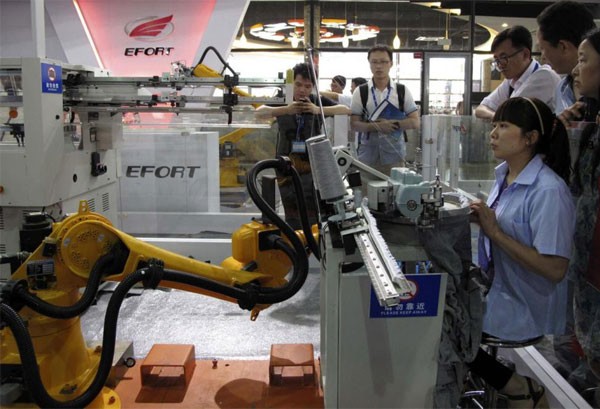China’s manufacturing sector could see recovery in utilizing robots as it faces a turning point due to labor cost increase, as reported by the Beijing-based Economic Observer.
The monthly minimum wage in the city of Shenzhen has increased to 2,030 yuan, after an annual 12-13-percent rise during the previous years. This is according to Zhou Daofu, an assistant to the president of a Shenzhen-based medical equipment maker, MeHow Innovative.
The upsurge has already resulted in some labor-intensive shoe and toy manufacturers either quitting the business or moving into Vietnam to go after lower labor costs, the newspaper added.
In neighboring Dongguan, 1,400 workers were left jobless after the closure of some manufacturers this year.
As a response to the changing landscape of the labor market, several firms have turned to robotics, employing the technology in their production operations.
Last month, Guandong's local authorities have announced that they will have a three-year scheme that aims to invest 943 billion yuan for the upgrading and adaptation of robotics of local manufacturers' equipment.
The province is eyeing to establish two robot production bases, four smart industry clusters worth 10 billion yuan and 10 smart production bases.
Simultaneously, its government officials are targeting the development of the province's robot-based productions, from 30 billion yuan last year to 60 billion yuan at the start of 2017.
Economic Observer also added that in Shenzhen, where laborers have the highest minimum wage, the local authorities also expressed their plan on joining the technological bandwagon.
Shenzhen officials are to invest 500 million yuan as subsidy to companies that will employ robotics in their production operations.
The utilization of robotic arms has resulted in a 50-percent increase in production, on top of incurring 70-percent savings on labor costs, according to Kehn Motor. However, this has also cut the total workers headcount to 500 from the previous more-than-3,000 figure.
Meanwhile, Zhou remarked that one challenge in adopting robotics in manufacturing is building the ability to program robots. The MeHow official noted that their workers who handle programming sometimes encounter problems.
The newspaper report still concluded that robotics could be the answer to China's mission of improving production efficiency and vision of becoming a manufacturing powerhouse.



























